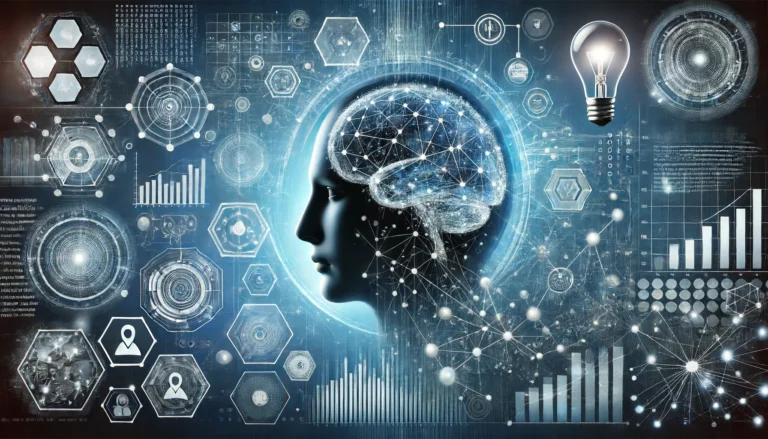Artificial intelligence (AI) has been touted as a groundbreaking technology, capable of disrupting countless industries and spheres of life. From autonomous cars to personalized marketing, AI’s applications are boundless, and one such application is predictive analytics. As the digital world continues to expand, so does the amount of data generated. This data is gold for predictive analytics, a statistical method that exploits existing data patterns to forecast future outcomes. But with AI’s infusion, predictive analytics has upped its game, promising superior accuracy, which is the focus of our discussion today.
Predictive Analytics: The Genesis
Predictive analytics isn’t a new phenomenon. Its roots trace back to the last century when statisticians first started to analyze data trends to predict future outcomes. The idea was straightforward – by analyzing historical data, you could gain insights to foresee what’s to come.
Initially, these predictive models were employed in relatively straightforward scenarios. Weather forecasting, for instance, used meteorological data to predict future weather conditions. But as the data influx grew, predictive analytics started to grapple with complex, multidimensional problems in diverse sectors, such as healthcare, finance, retail, and more.
However, traditional predictive analytics models are fraught with limitations. They require substantial human intervention for data pre-processing, feature extraction, and model selection. They struggle with the volume, velocity, and variety of big data. Also, these models aren’t very flexible or adaptable, which limits their ability to handle novel scenarios or changes in data trends.
The AI Infusion in Predictive Analytics
AI, with its capacity to learn from data and make decisions, stepped in to address these limitations, heralding a new era in predictive analytics. AI’s ability to crunch large amounts of data, discover patterns, and learn from them has led to the creation of more accurate and reliable predictive models.
There are primarily two types of AI algorithms used in predictive analytics – Machine Learning (ML) and Deep Learning (DL). ML algorithms build mathematical models based on sample data, known as “training data”, to make predictions without being explicitly programmed to perform the task. DL, a subset of ML, utilizes neural networks with many layers (hence, ‘deep’) to learn from vast amounts of data.
AI-Driven Predictive Analytics: A Quantum Leap in Accuracy
The inclusion of AI in predictive analytics has bolstered the accuracy of predictions in several ways:
- Data Pre-processing: AI algorithms can handle raw data directly, eliminating the need for substantial pre-processing. They can manage missing values, outliers, and inconsistent data, thus ensuring a cleaner dataset for analysis.
- Feature Extraction: Traditional predictive analytics often requires domain experts to identify the most relevant features (variables) for analysis. AI, particularly deep learning, excels in automated feature extraction, thus unearthing intricate patterns that a human expert might overlook.
- Model Selection and Tuning: AI algorithms can automate the process of model selection and hyperparameter tuning, which are typically manual and time-consuming tasks. They can also identify the optimal complexity for a model, avoiding overfitting or underfitting.
- Scalability and Adaptability: AI algorithms can handle ‘big data’ more efficiently, which is vital for accurate predictions. They can adapt to changing data trends, ensuring their predictive prowess doesn’t diminish over time.
- Incorporating Context: AI algorithms can incorporate context into their predictions, enhancing their relevance and accuracy. For example, if a retailer is predicting product demand, an AI model can consider factors like holidays, weather conditions, and market trends.
AI in Predictive Analytics: Real-World Success Stories
Several sectors are leveraging AI-infused predictive analytics for superior accuracy. Here are a few examples:
- Healthcare: In the healthcare sector, AI has been employed to predict the likelihood of diseases, assisting early detection and prevention. For instance, Google’s DeepMind developed an AI system that can predict acute kidney injury up to 48 hours before it occurs, allowing timely intervention.
- Retail: In the retail industry, predictive analytics helps in demand forecasting. Amazon uses AI-driven predictive analytics to anticipate customer demand, optimize inventory, and offer personalized product recommendations. This has significantly reduced their costs and improved customer satisfaction.
- Finance: Financial institutions use AI-based predictive analytics to evaluate credit risk, detect fraudulent transactions, and predict stock market trends. JPMorgan Chase utilizes AI to analyze legal documents and extract relevant information, saving more than 360,000 hours of manual work annually.
- Manufacturing: In manufacturing, predictive maintenance is a key application. Companies use AI to predict machinery failures, schedule timely maintenance, and prevent production disruptions. General Electric, for instance, has developed Predix, an AI-based system that predicts maintenance needs for various equipment, potentially saving billions in repair costs.
- Energy: In the energy sector, AI is used to forecast energy production and demand. DeepMind, in collaboration with Google, developed an AI system that predicts wind power output 36 hours in advance, boosting the value of energy produced by 20%.
Looking Towards the Future
The infusion of AI into predictive analytics is still a burgeoning field. As AI techniques continue to evolve, the precision of predictive models is expected to improve further. Techniques such as transfer learning, where an AI model trained on one task is used for another related task, and reinforcement learning, where AI learns optimal actions through trial and error, hold significant promise for predictive analytics.
Moreover, as more industries embrace digital transformation, more data will be available for analysis. With the Internet of Things (IoT) linking billions of devices, the volume of real-time data will explode. This proliferation of data will fuel AI-driven predictive analytics, allowing for even more accurate and granular predictions.
However, the use of AI in predictive analytics also poses challenges. These include issues related to data privacy and security, interpretability of AI models (the ‘black box’ problem), and the need for robust infrastructure to handle large-scale computations. As we move forward, addressing these challenges will be crucial to fully harness the power of AI in predictive analytics.
Conclusion
AI-driven predictive analytics represents the next frontier in data analysis, offering a powerful tool for forecasting with unprecedented accuracy. As we move into an era dominated by data, the ability to accurately predict future trends and patterns will be invaluable. From healthcare and retail to finance and manufacturing, AI’s influence is set to redefine predictive analytics, turning the art of prediction into a precise science.










